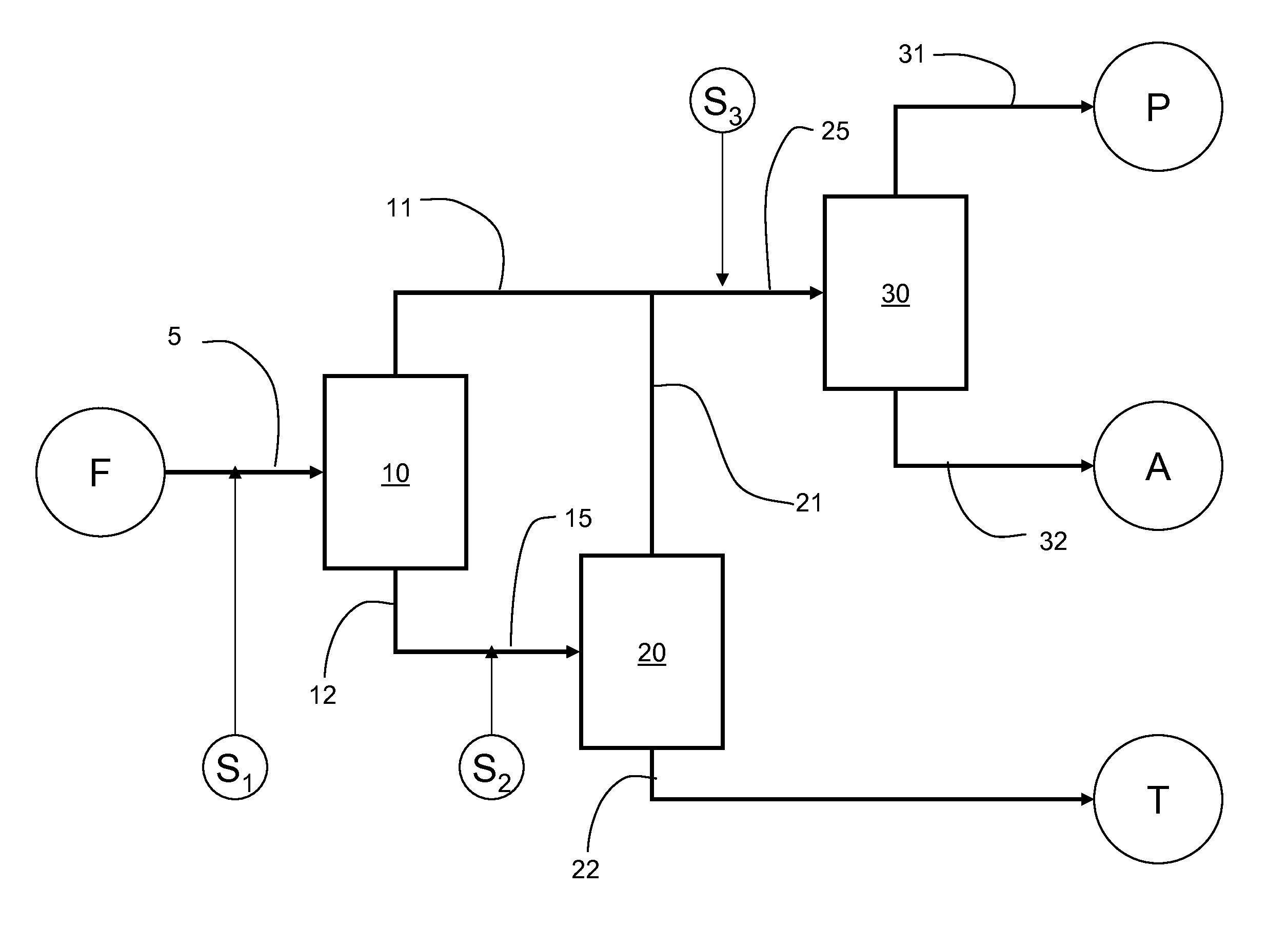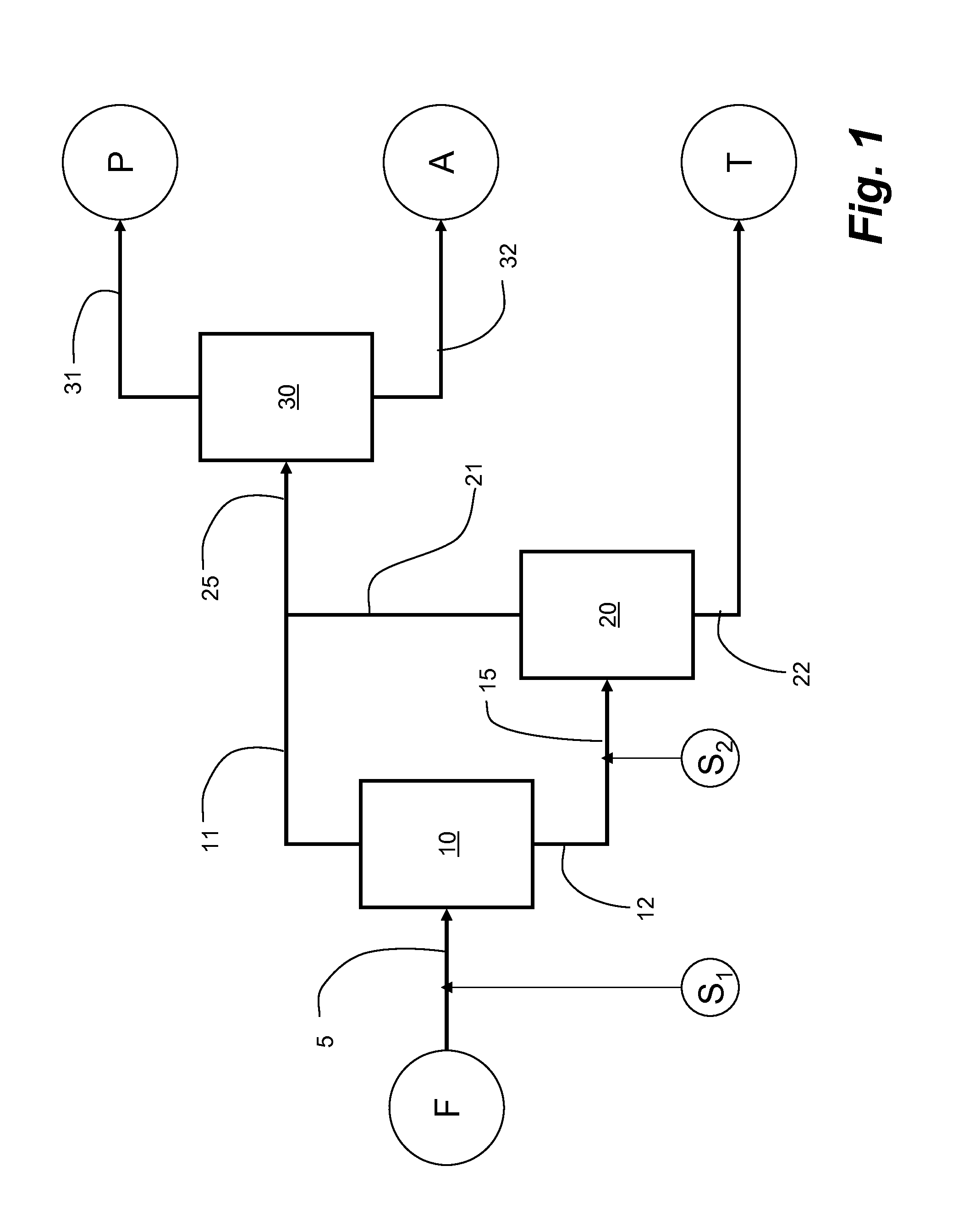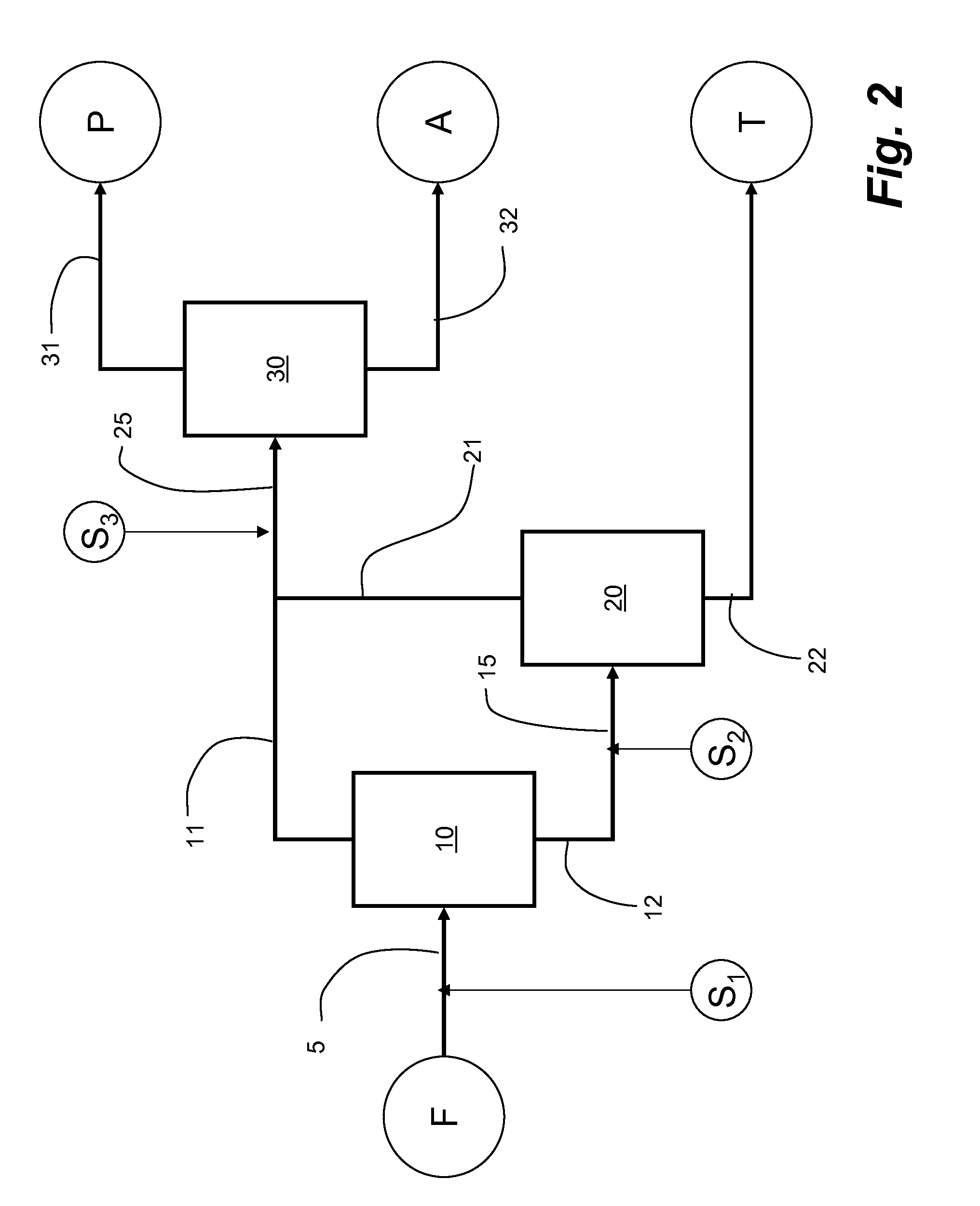Process and system for recovery of asphaltene by-product in paraffinic froth treatment operations
a technology of asphaltene and paraffinic froth, which is applied in the field of process and system for recovery of asphaltene byproduct in paraffinic froth treatment operations, can solve the problems of additional bitumen recovery, achieve the effect of minimizing tailings loss, maximizing overall bitumen recovery, and minimizing hydrocarbon loss
- Summary
- Abstract
- Description
- Claims
- Application Information
AI Technical Summary
Benefits of technology
Problems solved by technology
Method used
Image
Examples
examples
[0054]Bitumen comprises maltenes and asphaltenes. Froth F comprises bitumen, water and minerals. All percentages are in weight %.
[0055]Exemplary samples used in testing were as follows in Table 1:
[0056]
TABLE 1Froth for Examples A-EExamplesA, B, CD, EComponentwt %wt %Bitumen67.457.2Water23.834.7Mineral8.88.1Total100.0100.0Of the bitumen in the froth,17.919.5% asphaltenes
[0057]Laboratory programs were conducted to assess different locations for multiple solvent addition and the effect on the redistribution of asphaltenes.
examples a
, B and C
[0058]Table 2 outlines the parameters in the paraffinic tests for the embodiment shown in FIG. 1 and Tables 2A, 2B and 3C present the results. The solvent used was substantially pentane and the tests were conducted at 80° C. Each test happens to have been repeated using a demulsifier introduced to the first stage without significant adverse or beneficial effect.
[0059]
TABLE 2Examples A, B, C - Test Matrix for Paraffin SolventS / B in each stage based on FIG. 1Overall S / BFirst stageSecond StageTarget by Third1020Stage 30TESTS1 / BS2 / B(S1 + S2) / BA0.711.51.25B0.89.81.25C0.95.51.25
[0060]Tables 2A, 2B and 2C report the recovery of the original bitumen in the froth to the various products, rounded to the nearest 0.1%. For example, for Test A, the bitumen was recovered as follows: 88.6% to the diluted bitumen product P, 1.7% loss to waste tailings T and the balance of 9.7% in the asphaltene by-product A, for a total of 100% of the bitumen in the froth F. Asphaltenes are concentrated in...
examples d
, E
[0067]Tests for Examples D and E are additional tests performed at a different laboratory and using a different froth composition (see Table 1). Example D, like Examples A-C, has solvent addition to two stages of separation according to FIG. 1.
[0068]Example E is a test using solvent addition to all three stages of separation according to FIG. 2. It was expected that the use of solvent addition to the third stage settler 30 would further decrease the amount of precipitated asphaltene lost to the waste tailings T. Accordingly, the second addition S / B ratio to second settler 20 was decreased with third addition S / B ratios of 20 and accordingly reporting to waste tailings T. With reference to Tables 3A, 3B and 3C, the recovery of the original bitumen in the froth 5 is illustrated for the various product streams 22, 31 and 32.
[0069]
TABLE 3AExamples D, E - Diluted Bitumen ProductDiluted Bitumen Product P(Stream 31)S / BBitumen recoveryWater ContentSolid ContentTEST10(%)(wt %)(wt %)D0.892...
PUM
| Property | Measurement | Unit |
|---|---|---|
| gravity | aaaaa | aaaaa |
| volatile | aaaaa | aaaaa |
| temperature | aaaaa | aaaaa |
Abstract
Description
Claims
Application Information
 Login to View More
Login to View More - R&D
- Intellectual Property
- Life Sciences
- Materials
- Tech Scout
- Unparalleled Data Quality
- Higher Quality Content
- 60% Fewer Hallucinations
Browse by: Latest US Patents, China's latest patents, Technical Efficacy Thesaurus, Application Domain, Technology Topic, Popular Technical Reports.
© 2025 PatSnap. All rights reserved.Legal|Privacy policy|Modern Slavery Act Transparency Statement|Sitemap|About US| Contact US: help@patsnap.com



